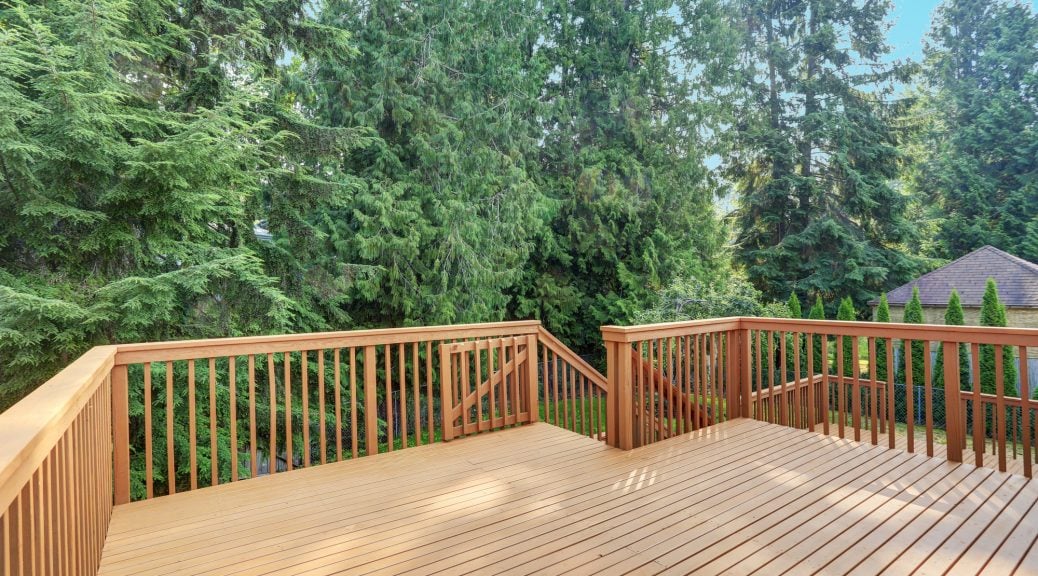In 2018, the percentage of houses with no outdoor addition, like a deck, patio, or porch, dropped to 8%. Most homeowners want some way to enjoy the outdoors, no matter where they live.
That’s because outdoor spaces like decks add value to your home, add extra living space, and let you show off your design skills.
If a deck best suits your outdoor needs, you must choose composite and wood decking. We’ve developed this guide to help you remove some guesswork from the process.
Keep reading to learn about the pros and cons of plastic decking versus wood decking.
Composite Versus Wood Decking
When deciding between composite and wood decking, it’s important to consider aesthetics, cost, durability, and your current lifestyle. You may find that wood is less expensive initially, but over the years, it requires more maintenance and, therefore, more money to keep it in good condition.
The composite may seem like e a smarter choice, especially since manufacturers are getting better at making boards that closely resemble natural wood. And while most composites absorb more heat in summer, making plastic decking hotter to the feet, new technology can drastically reduce heat absorption. However, many class action lawsuits and dissatisfied customers indicate that they have a long way to go.
Wood Decking
Wood is a natural product and can be recycled.
Also, the types of wood you can find may depend on your location. Here is the type of wood for decks most commonly used:
Pressure-treated Lumber
Most wood decking is made from pressure-treated lumber, including the understructure frame, such as posts, joists, and posts. It’s affordable and widely available.
Most treated decking is 5/4 x 6–inch planks. It’s typically cut from southern yellow pine and then treated with chemicals to resist fungus, wood-boring bugs, and decay.
The biggest con is that pine isn’t very dimensionally stable. It can crack, swell, split, and warp.
Redwood & Western Red Cedar
Both redwoods and western red cedar are known for their beautiful crimson color, natural beauty, and their natural resistance to decay, rot, and insects. As a result, they’re treated with fewer chemicals.
These trees made great decking because they are:
- Lightweight
- Easy to cut
- Stable
- Resistant to warping
Most sizes for decking are 2 x 6 and 2 x 4. They come in a variety of grades as well.
To maintain its color, treat it with a semitransparent stain every three to four years.
Tropical hardwoods
Tropical hardwoods are new to the decking scene. And they have some great characteristics, such as:
- Dense
- Hard
- Heavy
- Durable
- Naturally bug and rot-resistant
There are myriad species available, so pricing fluctuates. The most common decking sizes are 3/4- and 1-inch-thick boards.
- Ipe (King of Hardwoods)
- Cumaru
- Garapa
They’re easy to care for, but make sure your tropical hardwood decking has been legally and ethically sourced. You’ll ensure that your wood has been grown and harvested in a legal and more sustainable manner.
The Care & Maintenance of Wood
Natural wood requires more care than plastic decks. Every two to five years, you’ll need to perform the following tasks to keep your deck in good shape:
- Sand
- Stain
- Seal
- Paint
Twice a year, you should clean your deck.
Durability & Lifespan
Wood has about a 15-year lifespan to fight off the following problems:
- Splintering
- Staining
- Fading
Wood can last about 20 years.
Possible Problems After 20 Years
Before the following issues begin causing problems such as:
- Insect and rot
- Scratching
- Warping
On average, most wood decks last between 10 and 30 years, if untreated. It can last up to 50 years if it’s treated wood.
However, how well it was maintained, weather conditions and the type of wood used will determine how long it lasts.
Composite Decking
Composite decking is a hybrid product. It’s composed mainly of wood fibers and recycled plastic. Common names for composite decking are:
Composite decking can be dense and heavy. It’s also stain and weather-resistant. The lifespan varies significantly from company to company and from low to high-end product lines.
Most types of plastic decking have wood-grain patterns molded into their surfaces to give them the look of real wood.
The Care & Maintenance of Composite
Unlike wood, you don’t have to sand, seal, stain, or paint your composite. You should clean your composite deck twice a year to keep it looking clean.
You can use warm, soapy water and scrub your deck. Diluted bleach can kill any signs of mold or mildew.
Available in Different Colors & Sizes
Standard composite decking is available in several colors: brown, gray, and tan. These colors will likely fade over time, especially in areas exposed to direct sunlight. Which also makes it hard to replace boards if needed.
There are new fade-resistant composites available. They cost more but keep their color longer.
You can buy composite decking in lengths up to 16 feet.
Questions to Ask Yourself Before You Invest in a New Deck
Before you invest, you should ask yourself a few questions to help you decide which type of decking is best for you, such as:
- How will you use the deck?
- Is the deck in a sunny or shaded area?
- Will you do your deck maintenance or hire a company?
You should also consider how long you plan to live in your home. While a deck can help increase the value of your home, you shouldn’t blow your budget if you’re planning on moving within a few years.
The Price of Decking
It’s essential to understand all the costs involved before choosing. Here are the typical costs of both composite and wood decking materials:
- Pressure-treated wood: $1.50-$2.50 per square foot
- Cedar: $3.75-$5 per square foot
- Redwood: $6-$8
- Tropical hardwoods: $8-$12 per square foot
- Composite: $7-$10
Once you determine which material to use, try the free cost estimator to understand costs. Don’t forget to factor in the cost of maintenance moving forward if you choose wood.
Choose Your Decking Here
Now that you know the differences between composite and wood decking, it’s time to start shopping. We have a great selection of decking materials.
We offer competitive pricing and materials that can stand the test of time. Click here to start shopping today.

